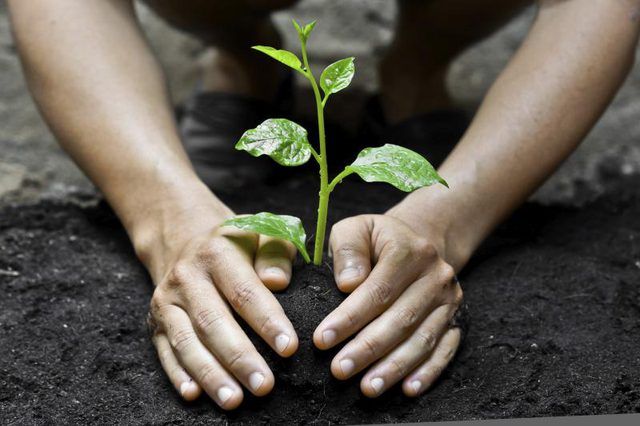Bulbs
Flower Basics
Flower Beds & Specialty Gardens
Flower Garden
Garden Furniture
Garden Gnomes
Garden Seeds
Garden Sheds
Garden Statues
Garden Tools & Supplies
Gardening Basics
Green & Organic
Groundcovers & Vines
Growing Annuals
Growing Basil
Growing Beans
Growing Berries
Growing Blueberries
Growing Cactus
Growing Corn
Growing Cotton
Growing Edibles
Growing Flowers
Growing Garlic
Growing Grapes
Growing Grass
Growing Herbs
Growing Jasmine
Growing Mint
Growing Mushrooms
Orchids
Growing Peanuts
Growing Perennials
Growing Plants
Growing Rosemary
Growing Roses
Growing Strawberries
Growing Sunflowers
Growing Thyme
Growing Tomatoes
Growing Tulips
Growing Vegetables
Herb Basics
Herb Garden
Indoor Growing
Landscaping Basics
Landscaping Patios
Landscaping Plants
Landscaping Shrubs
Landscaping Trees
Landscaping Walks & Pathways
Lawn Basics
Lawn Maintenance
Lawn Mowers
Lawn Ornaments
Lawn Planting
Lawn Tools
Outdoor Growing
Overall Landscape Planning
Pests, Weeds & Problems
Plant Basics
Rock Garden
Rose Garden
Shrubs
Soil
Specialty Gardens
Trees
Vegetable Garden
Yard Maintenance
What Does Nitrogen Do for Plants?
What Does Nitrogen Do for Plants?. Plants need nitrogen to develop large, deep green leaves and strong stem growth. Although nitrogen is naturally available in the soil, it's not always in a high enough amount to benefit the plants. Understanding how nitrogen works for plants can help guide your garden fertilizer choices.

Plants need nitrogen to develop large, deep green leaves and strong stem growth. Although nitrogen is naturally available in the soil, it's not always in a high enough amount to benefit the plants. Understanding how nitrogen works for plants can help guide your garden fertilizer choices.
Nitrogen Benefits
Nitrogen helps plants grow healthy green foliage and stems. Plants grown primarily for their foliage, including turf grass, foliage ornamentals and leafy vegetables, like lettuce (Lactuca sativa), can tolerate higher nitrogen levels. Plants grown for flowers or fruits, such as tomatoes (Solanum lycopersicum), may produce lush foliage with excess nitrogen, but they will flower or fruit poorly. Every plant has different nitrogen needs, and the amount of nitrogen available naturally in your soil affects how much additional nitrogen is necessary during fertilization.
Soil Testing
Decaying organic matter is the main supplier of natural nitrogen in the soil, but this nitrogen is often tied up in the soil. So, the plants can't use it until the organic materials decompose sufficiently. Nitrogen levels are constantly changing in the soil, so a soil test provides a reading only of the amount of nitrogen available at the time of the test. Use tests as a guide to determine initial nitrogen needs in a new garden, or to monitor the nitrogen levels annually in existing beds. Although small home soil test kits are available, taking a soil sample to a soil-testing facility provides a more accurate nitrogen reading.
Nitrogen Problems
Plants suffering from nitrogen deficiencies usually develop pale green or yellow leaves. Older leaves may yellow completely, and sometimes growth becomes stunted in highly deficient soil. Too much nitrogen can burn the foliage or even kill the plants. This usually occurs during fertilization if the nitrogen comes in direct contact with the leaves or stem. The high nitrogen concentration in the fertilizer requires dilution in the soil so that it doesn't cause plant damage.
Nitrogen Sources
Decaying organic matter isn't the only source for nitrogen. Some plants like legumes fix, or release, nitrogen in the soil on their own. Planting nitrogen-fixing plants as a cover crop in a vegetable garden or dormant flower bed can make more nitrogen available for the next plants. Compost can also provide some nitrogen. The most reliable forms of nitrogen come from fertilizers that contain urea, ammonium or nitrate. On fertilizer labels, the first number in the formula indicates the percentage of nitrogen in the fertilizer blend.
Nitrogen Application
Although nitrogen needs vary, most plants can grow well when the soil contains 4 to 5 percent organic matter, because at this density a steady rate of nitrogen is released for the plants to use. The soil test will recommend how many pounds of nitrogen is necessary to provide the most benefit to your soil conditions and for the specific plants you are growing. To determine fertilizer amounts, multiply the percent of nitrogen on the bag by the pounds of fertilizer it contains. For example, a 10 pound bag of 10-10-10 fertilizer contains 1 pound of nitrogen. If the soil test recommends the addition of 2 pounds of nitrogen, you must double the application rate on the bag to provide 2 pounds instead of 1 pound. When applying a nitrogen fertilizer, avoid placing it directly against plant stems or on the foliage, and water immediately after application so the fertilizer soaks into the soil and is rinsed off the foliage before it can cause burning.